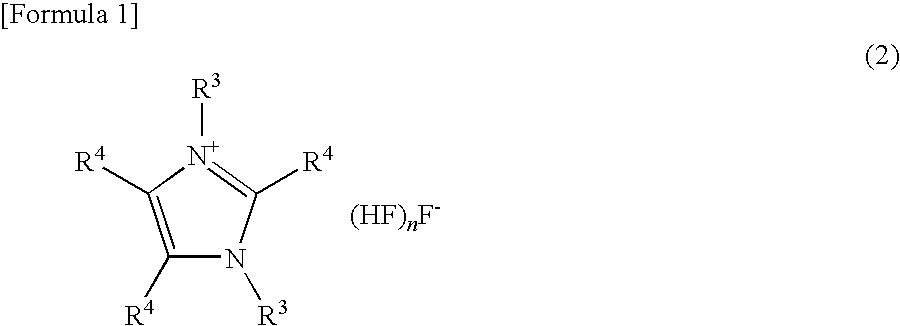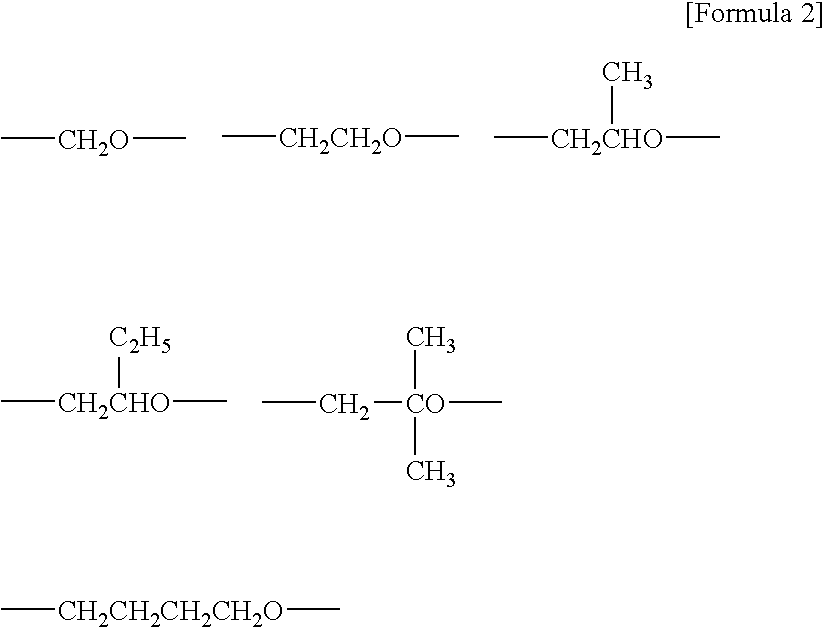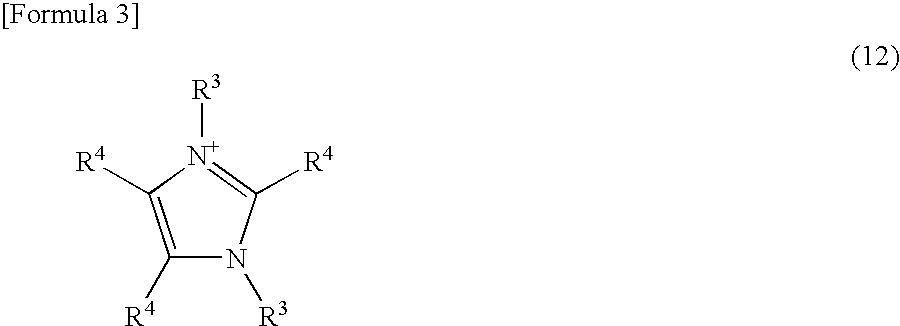Curable composition and catalyst composition
a composition and catalyst technology, applied in the direction of organic compounds/hydrides/coordination complexes, physical/chemical process catalysts, physical/chemical process catalysts, etc., can solve the problems of toxicity of amine compounds, deterioration of curability of curable compositions, and inability to obtain sufficient curability by using amine compounds alone, etc., to achieve good curability and workability, sufficient strength
- Summary
- Abstract
- Description
- Claims
- Application Information
AI Technical Summary
Benefits of technology
Problems solved by technology
Method used
Image
Examples
synthesis example 1
[0318]A polyoxypropylenetriol having a molecular weight of about 3,000 was used as an initiator to polymerize propylene oxide in the presence of a zinc hexacyanocobaltate glyme complex catalyst, so as to yield a polypropylene oxide having hydroxyl groups at its terminals and having a number-average molecular weight (molecular weight in terms of polystyrene measured by use of an HLC-8120 GPC as a solvent delivery system, a TSK-GEL H type as a column, and THF as a solvent) of about 26,000. Subsequently, to this hydroxyl-group-terminated polypropylene oxide was added a solution of NaOMe in methanol in a 1.2-fold equivalent of the hydroxyl groups of the polypropylene oxide, and then methanol was distilled off. Furthermore, thereto was added allyl chloride to convert the hydroxyl groups at the terminals to ally groups. An unreacted fraction of allyl chloride was removed by degassing under reduced pressure. Into 100 parts by mass of the resultant crude ally-group-terminated polypropylene ...
synthesis example 2
[0320]A 1 / 1 (ratio by weight) mixture of a polyoxypropylenediol having a molecular weight of about 2,000 and a polyoxypropylenetriol having a molecular weight of about 3,000 was used as an initiator to polymerize propylene oxide in the presence of a zinc hexacyanocobaltate glyme complex catalyst, so as to yield a polypropylene oxide having a number-average molecular weight of about 19,000. Subsequently, to this hydroxyl-group-terminated polypropylene oxide was added a solution of NaOMe in methanol in a 1.2-fold equivalent of the hydroxyl groups of the polypropylene oxide, and then methanol was distilled off. Furthermore, thereto was added allyl chloride to convert the hydroxyl groups at the terminals to ally groups. This process gave an ally-group-terminated polypropylene oxide having a number-average molecular weight of about 19,000. Into 100 parts by mass of the resultant crude ally-group-terminated polypropylene oxide were incorporated 300 parts by mass of n-hexane and 300 parts ...
synthesis example 3
[0322]A polyoxypropylenediol having a molecular weight of about 2,000 was used as an initiator to polymerize propylene oxide in the presence of a zinc hexacyanocobaltate glyme complex catalyst, so as to yield a polypropylene oxide having hydroxyl groups at its terminals and having a number-average molecular weight (molecular weight in terms of polystyrene measured by use of an HLC-8120 GPC as a solvent delivery system, a TSK-GEL H type as a column, and THF as a solvent) of about 25,500. Subsequently, to this hydroxyl-group-terminated polypropylene oxide was added a solution of NaOMe in methanol in a 1.2-fold equivalent of the hydroxyl groups of the polypropylene oxide, and then methanol was distilled off. Furthermore, thereto was added allyl chloride to convert the hydroxyl groups at the terminals to ally groups. An unreacted fraction of allyl chloride was removed by degassing under reduced pressure. Into 100 parts by mass of the resultant crude ally-group-terminated polypropylene o...
PUM
| Property | Measurement | Unit |
|---|---|---|
| Percent by mass | aaaaa | aaaaa |
| Percent by mass | aaaaa | aaaaa |
| Percent by mass | aaaaa | aaaaa |
Abstract
Description
Claims
Application Information
 Login to View More
Login to View More - R&D
- Intellectual Property
- Life Sciences
- Materials
- Tech Scout
- Unparalleled Data Quality
- Higher Quality Content
- 60% Fewer Hallucinations
Browse by: Latest US Patents, China's latest patents, Technical Efficacy Thesaurus, Application Domain, Technology Topic, Popular Technical Reports.
© 2025 PatSnap. All rights reserved.Legal|Privacy policy|Modern Slavery Act Transparency Statement|Sitemap|About US| Contact US: help@patsnap.com



